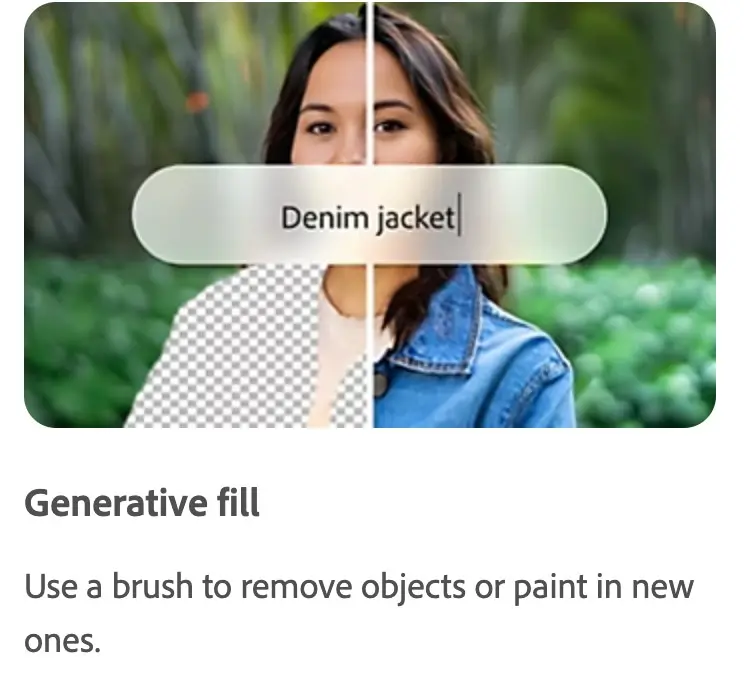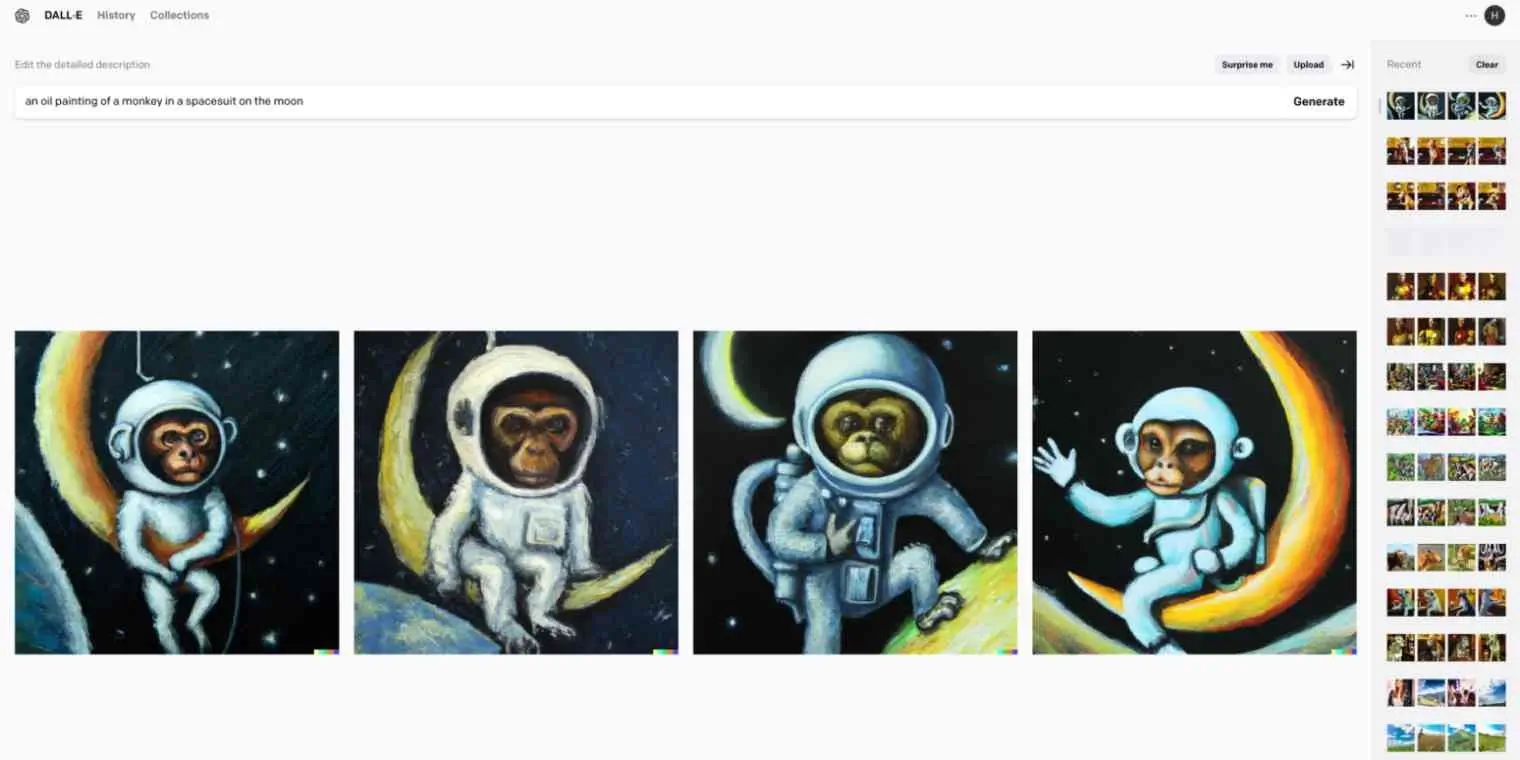Artificial intelligence has made huge impacts on our world in a short amount of time. Words like “AI-powered” or “AI-driven” are advertised on digital products ranging from language learning apps to grocery delivery services.
The impact of AI on UI design has been outstanding, with artificial intelligence technology continuing to integrate into our apps, websites, and design tools.
As such, the number of AI tools for UI design has skyrocketed in just the past three years, completely revolutionizing how designers go about their work. Not only are designers learning how to design products that utilize AI features, but they’re also using AI tools to expedite and enhance the UI design process.
We’ve researched the best AI tools for UI design and compiled a list of the top 10. Use the clickable menu to go to any directly:
Let’s get started!
Top 10 AI tools for UI design
There are so many options for UI designers to utilize time-saving AI tools in their designs. The popularity of using AI tools for UI design has increased the demand, and software developers are consistently churning out new, cutting-edge products.
We’ve sifted through many of them and compiled a list of the top 10 AI tools for UI designers. We’ll go into their features, cost, how they work, and how easy they are to use.
1. Khroma
Khroma revolutionizes the landscape of UI design by offering a harmonious blend of science and creativity.
With Khroma, designers are empowered with an AI-driven tool that suggests color palettes based on the principles of color theory and human psychology. Seamlessly integrated into the design workflow, Khroma assists in selecting colors based on inputted preferences that evoke the desired emotions and enhance user experiences.
By analyzing existing designs or concepts, Khroma generates a curated palette that not only maintains aesthetic coherence but also introduces innovative combinations.
This intuitive, free platform expedites the color selection process, enabling designers to focus more on crafting captivating interfaces that resonate with users.

2. Balsamiq
Balsamiq redefines the UI design process with its intelligent and user-friendly features. This AI tool enhances the wireframing experience by intuitively suggesting layout elements, components, and structures based on user prompts.
By understanding the design context and objectives, Balsamiq AI generates rapid and relevant wireframe prototypes that are a strong foundation for design iterations.
Its ability to anticipate user needs and design patterns streamlines the ideation phase, allowing designers to focus on refining the user experience.
It is incredibly user-friendly and a great choice for beginner designers. Balsamiq offers a 30-day free trial and payment plans that range from $90 to $1990 per year, depending on the number of projects worked on at one time (anywhere from two to 200).

3. Uizard
Uizard introduces a groundbreaking approach to UI design by leveraging the power of AI and automation.
With Uizard, the process of turning ideas into tangible designs is streamlined through its advanced technology. Not only is it intuitive, but it’s also cost-effective.
Select from a limited free plan, an all-access Pro plan for $12 per month, or a business plan that offers unlimited features plus priority support for $39 per month.
By transforming hand-drawn sketches or verbal descriptions into interactive prototypes, Uizard enables designers and non-designers alike to quickly visualize their concepts.
The AI-driven platform accurately interprets user input, suggesting design elements, layouts, and color schemes that align with the intended aesthetic and functionality. This accelerates the design cycle and encourages collaboration, as teams can rapidly iterate and refine their creations.

4. Mockplus
Mockplus stands out as an invaluable tool in the realm of UI design, offering a comprehensive platform that simplifies the creation of interactive prototypes.
By integrating design and functionality, Mockplus empowers designers to visually construct interfaces while incorporating responsive interactions and animations.
Its intuitive drag-and-drop interface ensures an effortless and efficient design process, suitable for both beginners and seasoned professionals.
With a rich library of pre-designed components, incredibly affordable payment plans ($0, $4.95/month, or custom), and a user-friendly collaboration system, Mockplus enhances teamwork and accelerates project development.
By enabling designers to visualize user journeys and test interactions, Mockplus significantly improves the user experience design, leading to refined and user-centric interfaces.

5. Adobe Firefly
This exciting new platform fuses the well-loved Abode tools with generative AI. Its familiar interface and specialized features enable designers to craft intricate user interfaces with precision.
Users simply input descriptive and qualifying text prompts to create brand-specific images, pictures, and more. Just describe the desired image and Firefly will provide it.
Furthermore, images or text that have already been created can be uploaded and the AI will provide different variations and styles.
Because it is still in beta, Adobe Firely is currently free to use. Or, it is available for use with Photoshop via Creative Cloud subscription.
From creating pixel-perfect assets to possibly video and animation features in the future, Adobe Firefly has consistently delivered the flexibility and functionality necessary to bring UI concepts to life in a cohesive and visually compelling manner.

6. Dall E-2
Integrating DALL-E 2 into UI design has been a remarkable leap forward in unleashing creativity and innovation.
This AI-powered tool has expanded the boundaries of traditional design by generating unique, imaginative, or even realistic visuals from simple language inputs.
One of the many revolutionary OpenAI products, DALL-E 2 transforms textual prompts into vivid visuals. Furthermore, Dall E-2 will accept existing images or pictures and give hundreds of variations back.
DALL E-2 pricing is a super simple credit-based system. Just $15 gives you 115 credits each with each credit supplying 4 images based on one prompt.
This accessible fusion of artificial intelligence and UI design has not only accelerated the ideation process but also added a fresh layer of artistic expression to evoke emotions through visuals that were previously unattainable.

7. GeniusUI
This innovative tool empowers designers to effortlessly craft dynamic and interactive elements, breathing life into digital experiences.
Still yet to be fully released, it aims to help designers swiftly prototype and refine designs with ease. It has an extensive library of pre-built components that give the flexibility to customize and adapt elements according to specific project needs.
Using ChatGPT-powered technology, GeniusUI can understand inputted design requirements and generate high-fidelity components compatible with many popular frontend frameworks like Angular, React, and Vue.
Cost is not currently available as users can only sign up for the waitlist at this time. GeniusUI promises to be an easy-to-use tool for startups, small businesses, or larger enterprises.

8. Predict AI
Predict AI (formerly Visual Eyes) has revolutionized UI design by providing an immersive and comprehensive platform for visualizing user behavior in real-world contexts.
Predict AI is a heat mapping software that quickly gives UI creatives valuable information about their designs by simulating how designs will interact and engage with users across different devices and scenarios.
The ability to view and iterate designs within their intended environments has significantly improved the accuracy of UI designers’ creative decisions, ensuring seamless user experiences.
This is a great option for UI designers with little budget or time to conduct eye-tracking studies themselves.

9. Visily
This AI-powered design tool takes ideation to the next level that takes various types of prompts, like text, screenshots, URLs, sketches, or templates and transforms them into editable wireframes and prototypes.
Visily comes with the option to design for lo-fi or hi-fi mockups, as well as an AI design assistant that helps correct common issues.
The real-time collaboration features allow for seamless teamwork and communication, and the ability to generate responsive designs allows you to see how designs will adapt to various screen sizes and devices.
Visily’s over 1000 free templates and beginner-friendly features are still free right now with their Starter plan. However, Visily will soon launch a paid Pro version with more AI credits, priority support, and more. Sign-up and onboarding are especially easy, and all your designs are yours to own, even in the free Starter plan.

10. ChatGPT
This OpenAI product may not be an obvious choice when considering AI for UI design.
However, with a few simple steps, ChatGPT can quickly provide you with the HTML code necessary to make your UI elements come to life. Simply input a text prompt describing the requirements of the UI element desired (e.g., oval, purple button with a gray shadow that says Sign Up), and ChatGPT will give you the code you can edit or integrate into your designs.
While not a completely adequate AI tool for UI design, in combination with other front-end development software like CodePen, ChatGPT can be a quick, free, and accessible option for a prompt-based AI tool.
While there is a paid Pro package for $20/month, the free version of ChatGPT is still incredibly sufficient.
Read our full guide on how to use ChatGPT for UI design here.

Closing thoughts
Artificial intelligence has been integrated into many aspects of our everyday life.
In recent years, UI designers have benefitted from the copious AI software that makes their daily tasks easier and enhances the quality of their designs.
These AI tools for UI design not only expedite the UI process but can also take the creativity and innovation of our everyday apps, websites, and digital products to the next level.
Looking to dive into the world of UI design? Try our free short course.
If you’re interested in learning more about UI design, AI, and related topics, check out these articles below:

